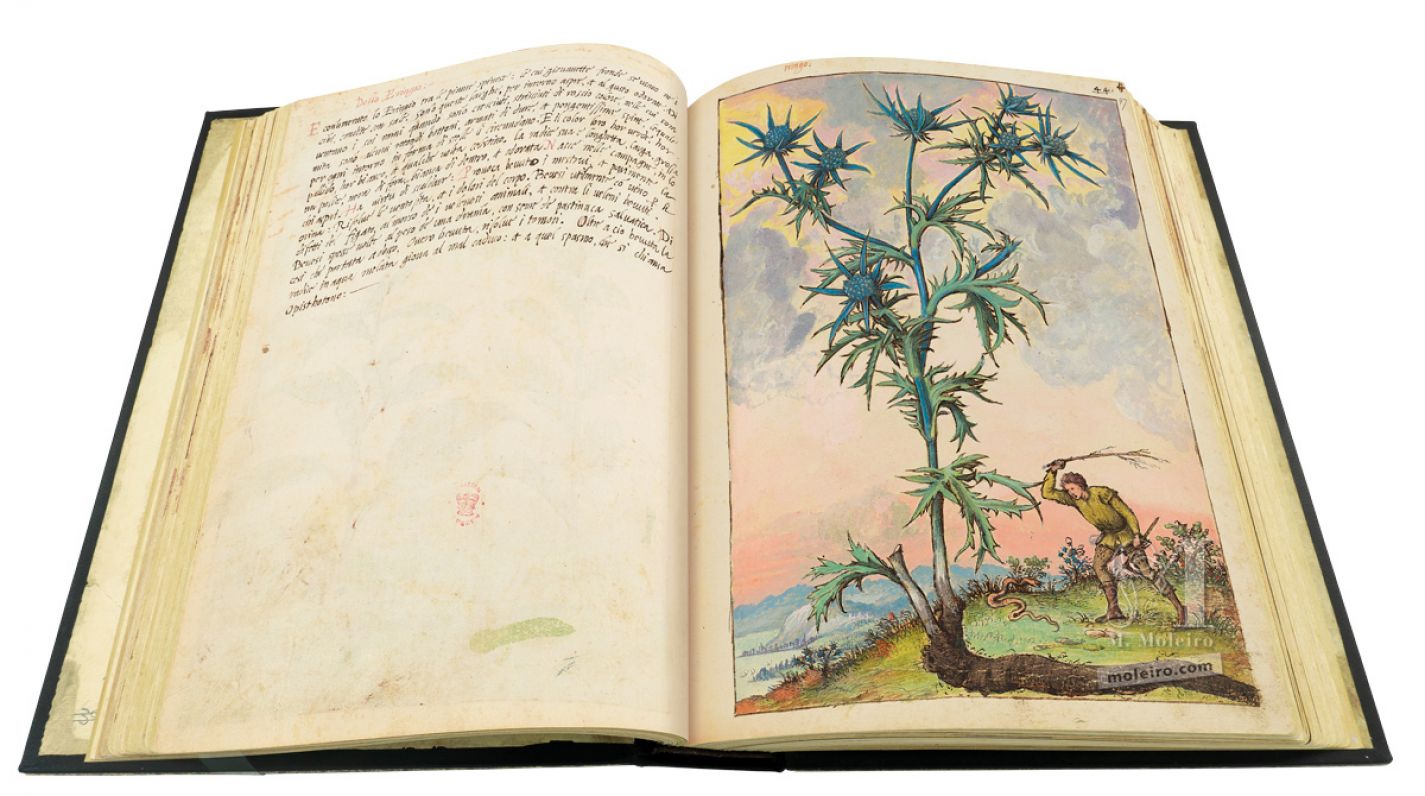
The eryngo is one of the prickly plants whose young leaves, seasoned with salt, are used in cooking; they are broad, have a spiny edge and an aromatic taste. The branches, once they have grown, are streaked with red and bear at their top several round heads with hard and very sharp prickles all over them, like a star. The colour can be green, or paler, or white, and sometimes pale blue. The root is long, broad, as thick as a thumb, black outside, white within and scented. It grows in fields and rough places. It has a warming property. When drunk, it stimulates both the menstrual cycle and urination: it heals flatulence and intestinal pains. Drunk with wine, it helps against liver malfunction, the bites of poisonous animals, and ingested poisons. A dram of it is often drunk together with the seed of wild parsnip. It is said that the eryngo root, worn or drunk, dissolves tumours; moreover, drunk in honeyed water, it is beneficial against epilepsy and the convulsion which is called opisthotonus. (f. 46v)
This plant grows in arid pastures throughout Europe and the Mediterranean region. Its spiky leaves sprout from its root every year. When dry, the part above ground is dispersed by the wind. Its roots are gathered and dried. It contains essential oil, saponins and sugars. Its cooking water is an aperitive and diuretic. It lowers blood pressure, is anti-inflammatory, is applied to irritated skin and is good for all kinds of infections. Dioscorides writes that the colour of the plant, particularly of its inflorescences, is sometimes pale blue. So it might, judging by Cibo’s miniature, be the species known today as Eryngium amethystinum. However, according to other features in the miniature, it bears a greater resemblance to the Eryngium campestre species.
Ramón Morales Valverde
Real Jardín Botánico de Madrid
(Extract from the commentary volume of Mattioli's Dioscorides illustrated by Cibo)